One of the main reasons why pets don’t have a longer lifespan is obesity. According to cat obesity statistics, the cause of obesity can be genetics, lifestyle, health predispositions, and many more factors.
Still, one of the reasons why many cats have problems with overweight is the daily habits which include a minimum of activities. Every year statistics revealed shocking results of an increasing number of cats that are overweight or obese. Do you know which percentage of cats have problems with weight in the United States?
We prepared some of the most interesting cat obesity statistics, and if you’re interested to find more about this topic, keep on reading.
10 Shocking Cat Obesity Facts
(Editor’s pick)
- Statistics show that overweight owners are more likely to have an overweight pet.
- Nearly 100 million pets in the United States are overweight or obese.
- About 60% of all cats in the United States are obese or overweight.
- The average treatment for a cat is around $445.
- Studies show that around 68% of pet owners had tried to help their pets lose weight.
- Only 15% of cat owners weigh their pets every month.
- Obese cats have 2.8 more risks of mortality.
- Around 45% of cat owners think a grain-free diet is healthy.
- Cats that are 20% over their ideal weight are obese.
- The increase in the number of overweight cats is more than 160% in the last 10 years.
The List Of 20 Cat Obesity Statistics & Facts
1. Statistics show that overweight owners are more likely to have an overweight pet
Overweight or obese owners are less likely to spend time playing or exercising with their pets, which includes daily walks. Also, overweight owners are less likely to have a healthy menu every day, which can affect their pet’s weight, too.
Cat owner statistics show that if the owner has a problem with weight, there is a high possibility pet will also be overweight. But, the best decision, if the owner wants to lose weight, is to have a pet. Daily walks with a companion will be great for both of them.
2. Nearly 100 million pets in the United States are overweight or obese
One of the leading health threats for all animals, especially pets, is overweight and obesity. Data reported by Nationwide show that pet obesity increased in the last 7 years.
Association for Pet Obesity Prevention (APOP) made research in 2016, and the result showed that 28% of cats were overweight, and 31% of them were clinically obese which shows more than 30% above their ideal weight.
According to another APOP statistics obesity rate for cats in 2009. was 21% and in 2016. 31%. These statistics show an alarming increase in clinical obesity with, unfortunately, still increasing.
Source: vetinnovations.com
3. About 60% of all cats in the United States are obese or overweight
When a pet has a problem with the weight it can cause a lot of health problems which can in a short time lead to some illness and even cancers. Cats are active animals but if they’re indoor pets, there is a higher possibility you will not notice the cat is overweight or obese in some part of their life.
According to Association of Pet Obesity Prevention statistics from 2018., about 33.8% of cats were obese. Comparing it to 2013., the percentage of obese cats was 27.4%.
The latest statistics show that majority of cats in the United States have problems with weight. An estimated 56 million cats were included in the survey and results show that around 59.5 % are obese or overweight cats in the country.
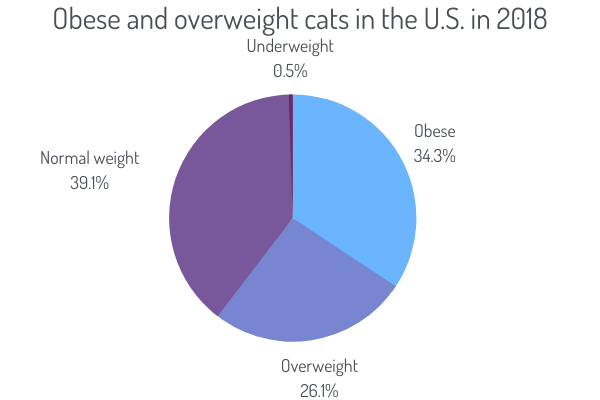

Source: healthline.com
4. According to stats, between 39-52% of cats in the UK are overweight or obese
Other countries also have problems with a high percentage of overweight or obese cats, and the UK is one of them. Statistics from last year show that from 39 to 52% of cats are overweight or obese. The main reason why pets tend to get on weight is the overconsumption of calories on a daily basis and lack of psychical activities.
Source: icatcare.org
5. Stats show that pure breed cats are less likely to have problems with weight
There is a strong connection between mixed and pure breed obesity and which cats tend to easier gain weight than others. The results of most studies show that pure breed cats are less likely to have overweight problems or become obese than mixed breeds.
Studies also show the result of neutered and not neutered cats. Cats that are neutered tend to become more obese than others that are not neutered. The main reason is the metabolic rate which usually decreases by around 20%.
Source: icatcare.org
6. About 15% of cat owners think their cat doesn’t have a problem with weight when it’s actually overweight
Many cat owners don’t know which is normal weight depending on the size of the cat, or her age. According to surveys, around 15% of cat owners said their pet is normal weight when actually it has a few kilos more or oven was obese.
When a cat is overweight it shows that the pet has around 19% more kilos than normal for their age or size. If the cat is obese it will show above 20% of its normal weight. Also, the cat will not be active as usual and will have trouble with moving, jumping, or walking. For all pet owners, it is recommended to visit the veterinarian for weighing cats.
Source: dosomething.org
7. The average treatment for a cat is around $445
To have a health and well-being cat, sometimes it can higher annual expense for thousand dollars, depending on medical problems. One of the biggest medical problems is obesity, and treatment can go up to $445 per cat that has bladder or urinary tract disease.
Only in 2016. there were around 1.4 million claims for obesity-related conditions. For these claims, there were more than $62 million in veterinary expenses.
Source: vetinnovations.com
8. Studies show that around 68% of pet owners had tried to help their pets lose weight
According to different studies, around 68% of pet owners that notice their cat has a few kilos more than normally had tried to help them lose weight. Also, around 80% of veterinarians suggested using different tactics that will help them with weight.
The tactics include reducing calories, increasing exercise, and physical activities and if needed, precision weight-loos diets. Most of the veterinarians revealed that the amount of food is not necessarily the main reason why cats gain weight, it is mostly because animal breeds don’t get enough nutrients and calories to the level of their activity.
There are many therapeutic diets that veterinarians can prescribe, which include food with different levels of fiber or fats.
Source: usatoday.com
9. Around 68% of cat owners think calorie reduction is the best method
If some of the pet weight-loss methods will work depending on many factors like age, breed, daily habits, etc.
According to studies, around 68% of pet owners think that leading pet weight-loss methods is smaller portions and calorie reduction. In the second place, 61% increased more activities and exercises like daily walking. 29% tried low-fat pet or low-calorie cat food, and 19% of them used a prescripted diet from their veterinarian.
After respondents use some of the methods they’ve been asked how their method was effective. The results show that 38% of them rated calorie reduction as a “very effective” method. Only 9% of pet owners reported a low-calorie diet as “very effective”.
Using the method with prescripted diet, around 13% of them reported it was “very effective”. Further analysis s about the pet weight-loss method that included a prescription diet revealed that around 70% of owners never tried this method.
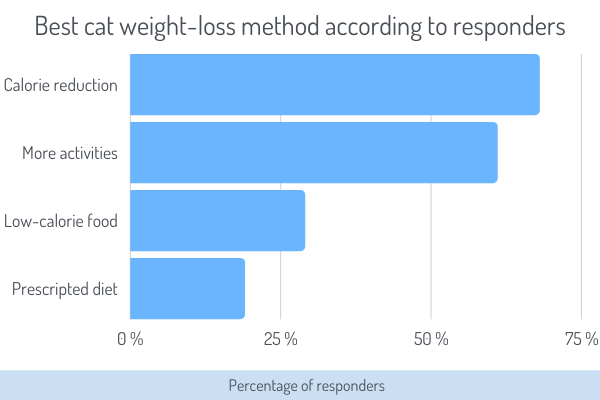

Source: usatoday.com
10. Around 50% of pet owners reported their veterinarian discussed cat’s weight during a visit
An annual visit is a must when having a pet, so you can check their health, weight, and other needed checkups. When it comes to diagnosing cat obesity, around 53% of cat owners reported their veterinarian discussed pet’s weight during visits.
Around 19% of cat owners said “occasionally”, and 20% “only when asked”. There are 8% of cat owners that veterinarians didn’t discuss cat’s weight during the annual visits.
Source: petobesityprevention.org
11. According to stats, two-thirds of pet owners agreed on vets are knowledgeable about pet nutrition
Many cat statistics show that veterinarians recommend a routine or maintenance diet for their cats, but not all of them think they’re are knowledgeable about pet nutrition.
However, most of them, precisely, two-thirds think they are professional and know about pet nutrition. 20% of them disagreed and 13 % of them said they’re not sure or don’t know.
38 % of pet owners reported their veterinarian to recommend the best routine or maintenance diet for their cat during last year. Only 22% of responders said they had to ask for a diet, and 40% said no dietary advice even if they notice their cat has a problem with weight.
Source: petobesityprevention.org
12. Only 15% of cat owners weigh their pet every month
When owners spend the most time with their pets, in many cases they don’t notice the cat has more kilos than usually. Weighing is recommended every month, especially if the owner notices the cat is gaining a lot of weight for no reason.
According to the survey results, around 44% of respondents said they weighed their cat every few months, and only 28% of them do it once a year. The lowest percentage, around 15% reported they weigh their cat every month, no matter if it’s at the veterinarian center or at home.
Source: petobesityprevention.org
13. Overweight cats have a higher risk to get some forms of cancer at an early age
There are many factors that are connected with the predisposition of obesity, like age, lifestyle, sex, genetics, and much more. Females are typically more prone to have problems with overweight or obesity than males, but genetics can also be one of the main factors.
Overweight cats are at high risk to have health problems which include high blood pressure, immune suppression, diabetes, heart disease, orthopedic or arthritis disorders unfortunately some forms of cancer.
14. Obese cats have 2.8 more risks of mortality
Obesity can shorten a cat’s life and animals can easily develop many types of disease, including cants. According to cat obesity statistics, cats have 2.8 more risks in mortality, from the age of 8 to 12, comparing it to elan cats.
Overweight cats usually live around 6-12 months less than cats with normal weight, but there are many cases that show how cats live 2 years less if they have a problem with weight.


Source: vcahospitals.com
15. Overweight cats have more physical pain that causes emotional stress
Not that only overweight and obesity can cause psychical health issues which can lead to different diseases and even cancers, Being overweight can cause a lot of pain which will also cause a lot of emotional stress in pets.
According to one study which measure vitality, levels of anxiety, pain, and emotional disturbance were all negatively affected because of excess of kilos. The quality of a cat’s life will drop dramatically if the pet has a problem with weight. When animals lose weight, all scores will improve, as well.
Source: petkeen.com
16. Cats under 2 years are less likely to be overweight or obese
One of the factors related to the prevalence of overweight or obesity is age. According to cat statistics, cats under 2 years are less likely to have problems with weight.
Cats that have between 2 and 10 years require less energy which can cause obesity. Cats over 10 years who are senior pets have the highest possibility to be overweight as well as underweight, depending on health conditions.
Source: icatcare.org
17. Around 45% of cat owners think a grain-free diet is healthy
One of the main factors that cause overweight in cats or even obesity is the food choice that is in many cases poor with needed nutrients that will help the pet stay healthy.
According to one research about grain-free pet food, about 45% of cat owners agree this type of diet is healthy for their cat, while 15% of veterinary professionals disagree. Also, 35% of cat owners don’t know if the grain-free diet is healthy.
Summarizing the whole survey from 2017, about 45% of pet owners, including cat owners, believe grain-free options are much healthier for cats, while only 22% of veterinary professionals think the same.
Source: petobesityprevention.org
18. According to APOP stats, around 55% of cat owners consider feeding their pet with clean meat
Association for Pet Obesity Prevention (APOP) made research with pet owners, about alternative proteins they would consider feeding their pet. The highest-ranking alternative protein was clean meat, and results show that 55.2% of cat owners reported they would consider feeding their pets with clean meat. About 27.9% of cat owners will maybe feed with clean meat.
The second-highest ranked was cultured poultry and around 23.8% of cat owners say they will feed them with this type of food, and 40.1% of them will be using it. Pea protein was rated with yea for 17.4% of cat owners.
Source: petobesityprevention.org
19. Cats that are 20% over their ideal weight are obese
Cat owners don’t know how to measure if the cat is overweight or not, because sometimes it is hard to decide, mostly if the cat has a lot of furs and long hair. To check if the cat is obese or overweight owner should be able to easily feel the pet’s ribs without hard pressing.
Cats that are from 10% to 20% over their ideal weight, depending on the age, size, or breed, are considered overweight. Everything above 20% is considered as obesity.
One of the biggest problems today is that the “fat pet gap” became normal by pet owners, but the normalization of obesity, which considers a new normal, can cause a lot of health issues to pets.


20. Over the past 10 years, the increase in the number of overweight cats is more than 160%
Statistics in the last 10 years who the number of overweight cats increase by around 169%. Every year the number of overweight cats was increasing, mostly because of the higher cat adoption rate.
Cats sleep most of their day, so it is recommended to take them for a walk or include different activities so it doesn’t become obese. But, in many cases, cat owners don’t have enough time to take care of the cat, especially about daily activities.
To Sum Up
Obesity is the number one problem that causes health problems which leads to many diseases as well as cancers. Cat obesity statistics show how 60% of all cats in the United States are overweight or obese. Only 15% of pet owners weigh their cats every month. If the cat has 20% more kilos than normal weight it is considered obese. The number of overweight cats increasing every year, and it is recommended to do more frequent veterinarian checkups when professionals will recommend tips that will help your pet lose weight.


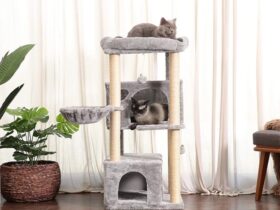
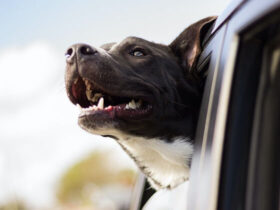
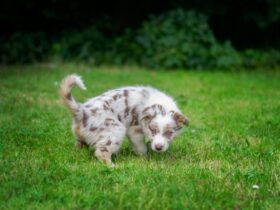
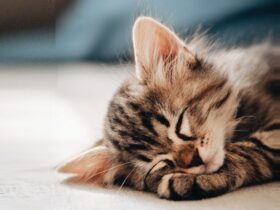
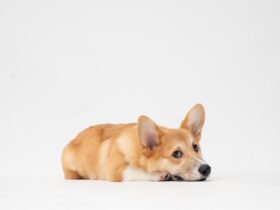





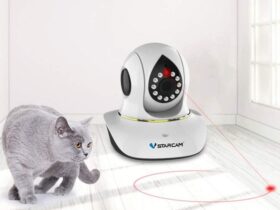





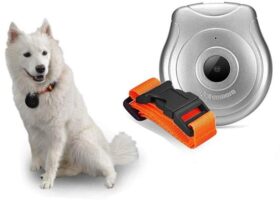
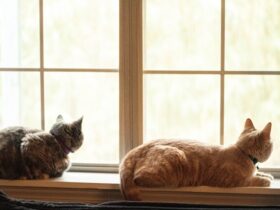
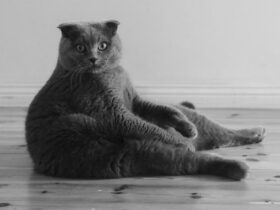

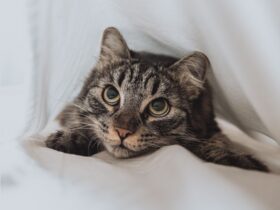
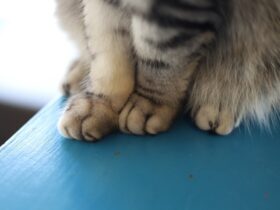

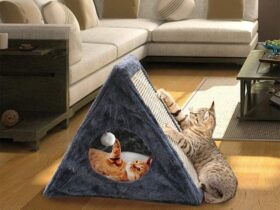
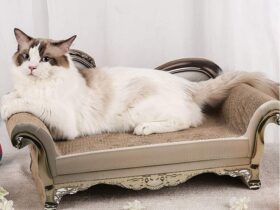
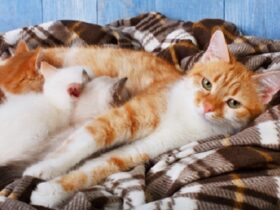
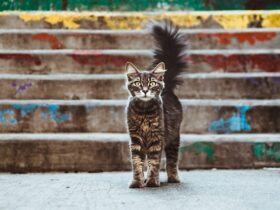
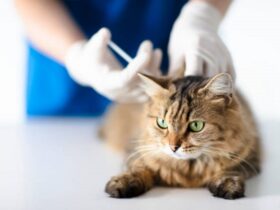

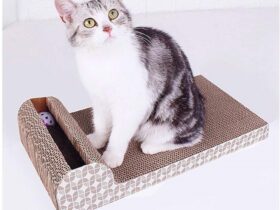

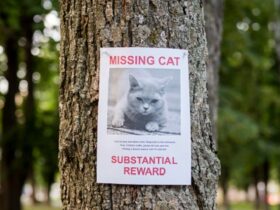
Leave a Reply